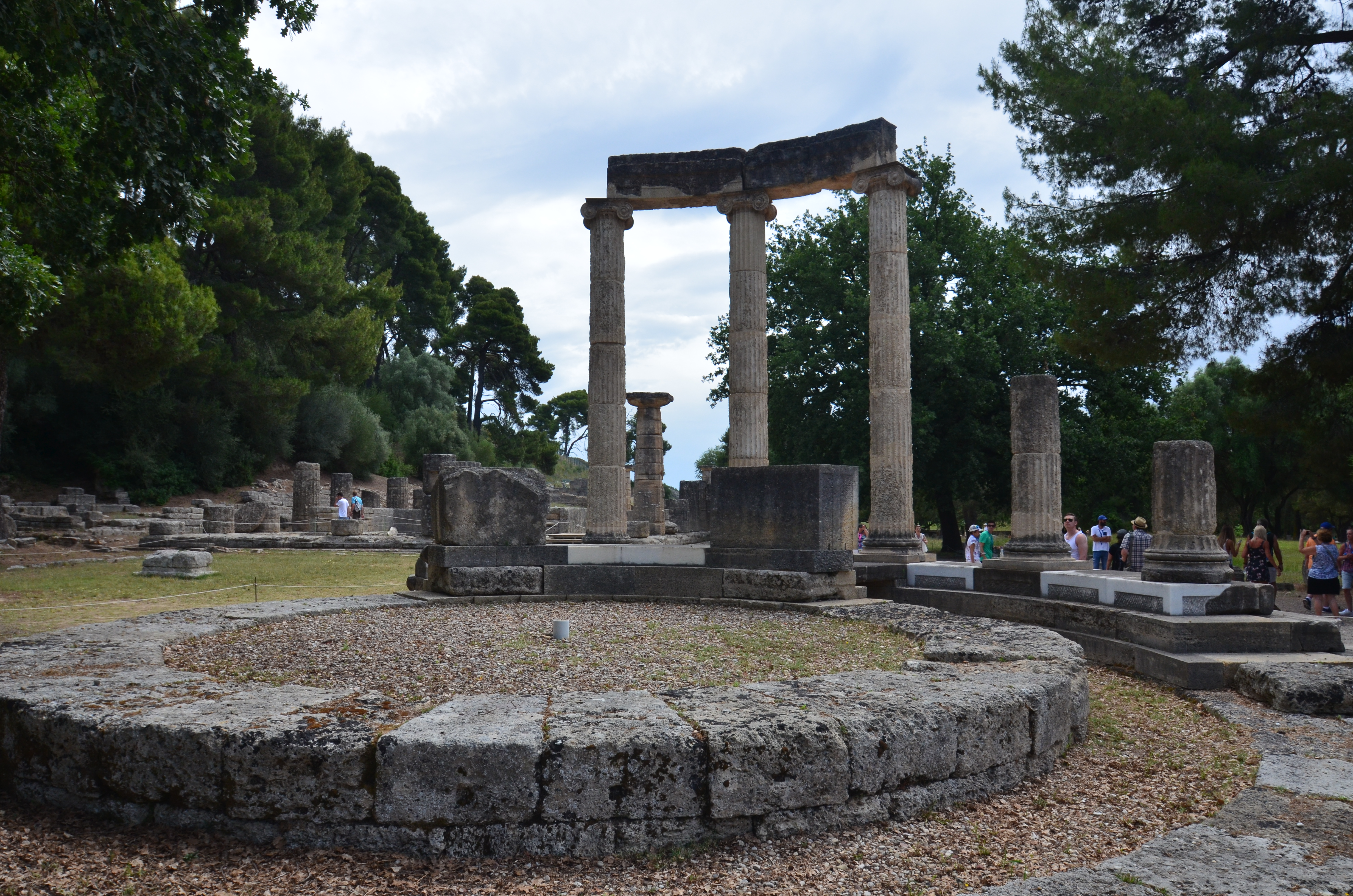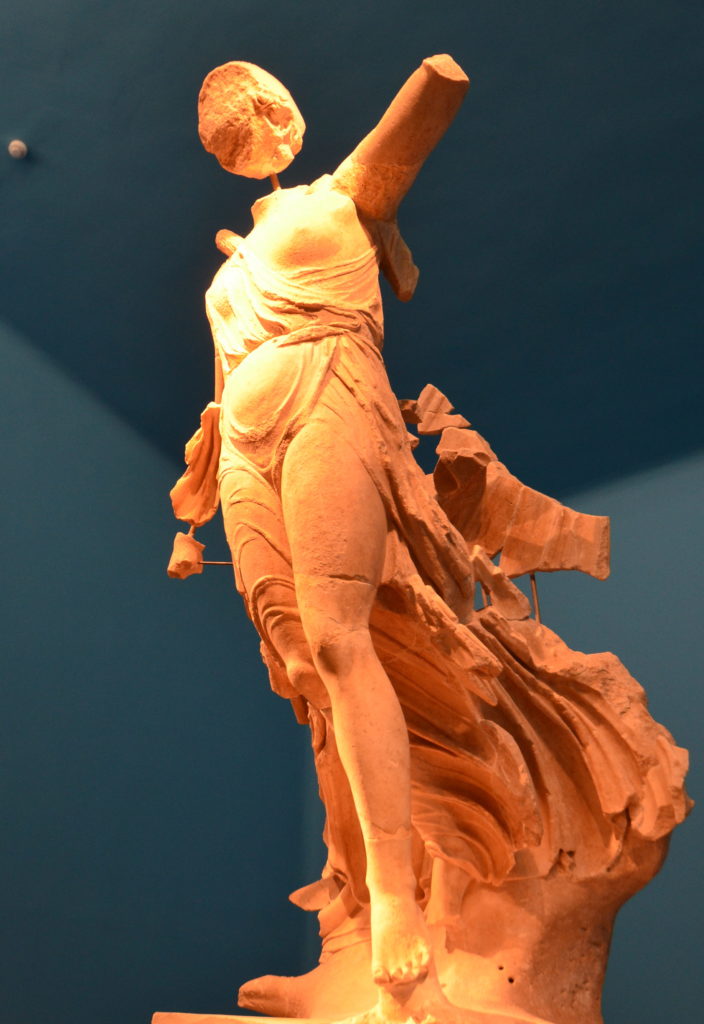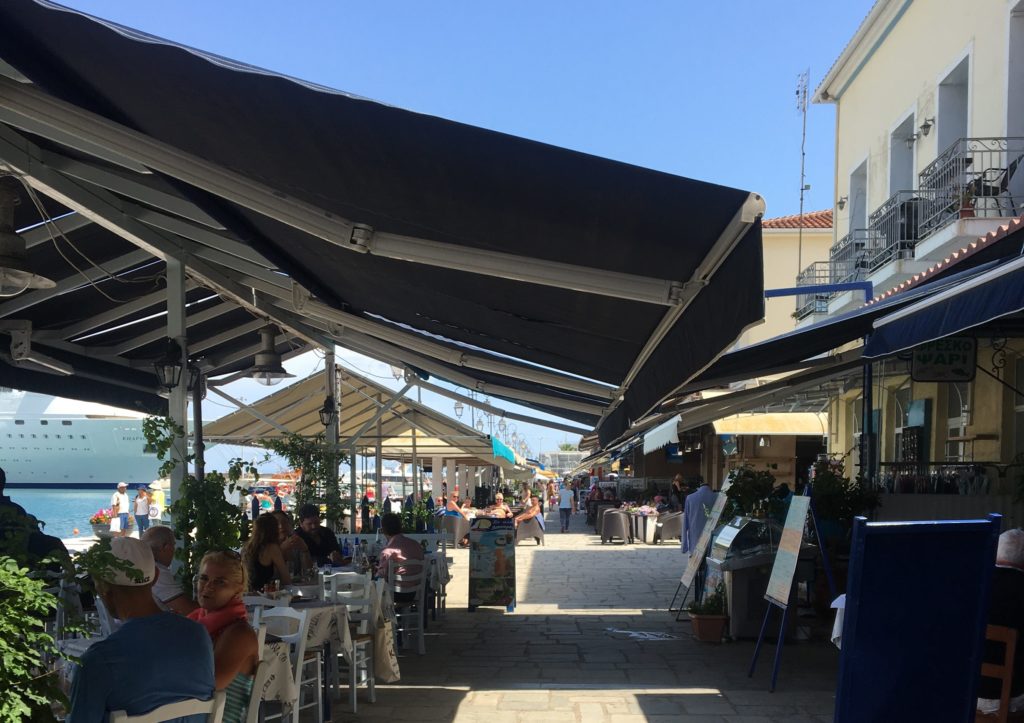Our last port of call was to Katakolo and Ancient Olympia. I had heard of Olympia, as the birthplace of the Olympics, but honestly didn’t know what to expect. It turned out to be one of my favorite parts of our trip.
Katakolo. sometimes spelled Katakolon, is a port town. It’s cute with lots of restaurants and souvenir shops, but that’s it – no real history here. Where you want to go is Olympia – about 33 kilometres away.
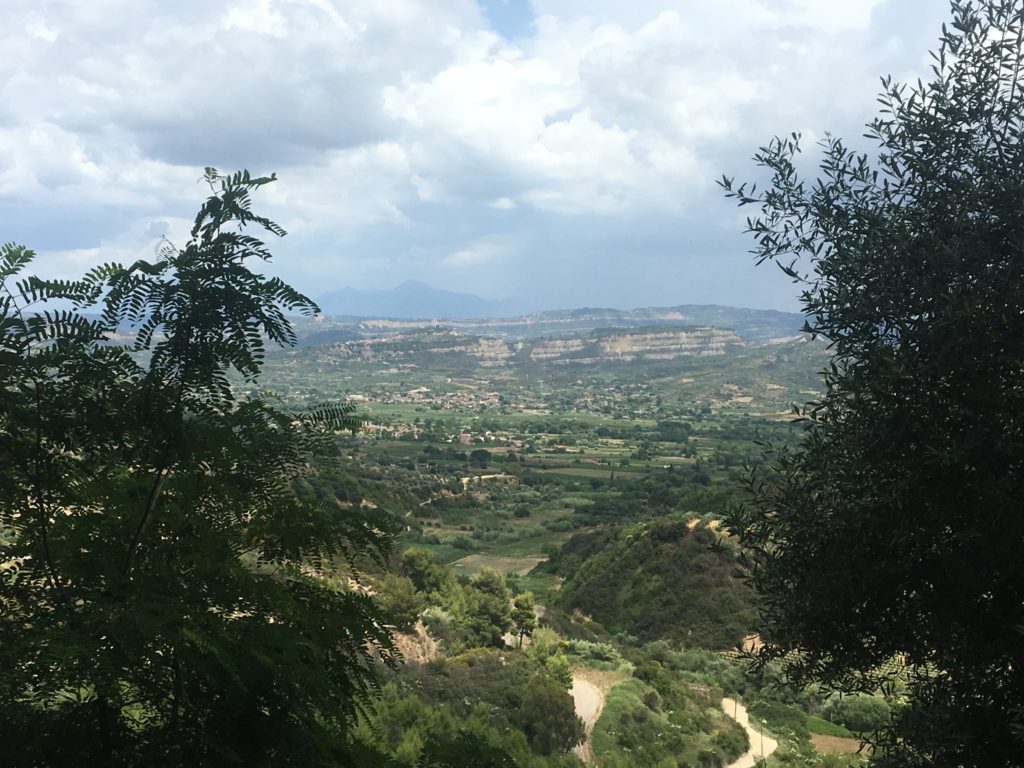
Ancient Olympia
We booked a private tour though Katakolon Taxi to take us to Ancient Olympia, which was completely worth it. The lush, mountainous countryside brimmed with olive trees as our driver told us about our destination. The Olympics is thought to have begun around 776 BC in honor of Zeus. During that time only Greek men (and later Roman men) competed. Slaves and married women were forbidden to even watch the games and if caught, were killed. Unmarried girls could compete in the Festival of Hera, named after Zeus’ wife. The games continued despite several several earthquakes and the rise of the Roman Empire. Eventually, Theodosius I banned the games because they were pagan around 393 AD.
At Ancient Olympia, we spent over an hour walking around the ruins. Placards at each structure told us what the building had been in its heyday. I won’t post too many pictures because after a while, it looks the same. However, I was amazed at how many structures remain (though not intact) and how much is known about their purpose. Apparently, the ruins were discovered around 1875.
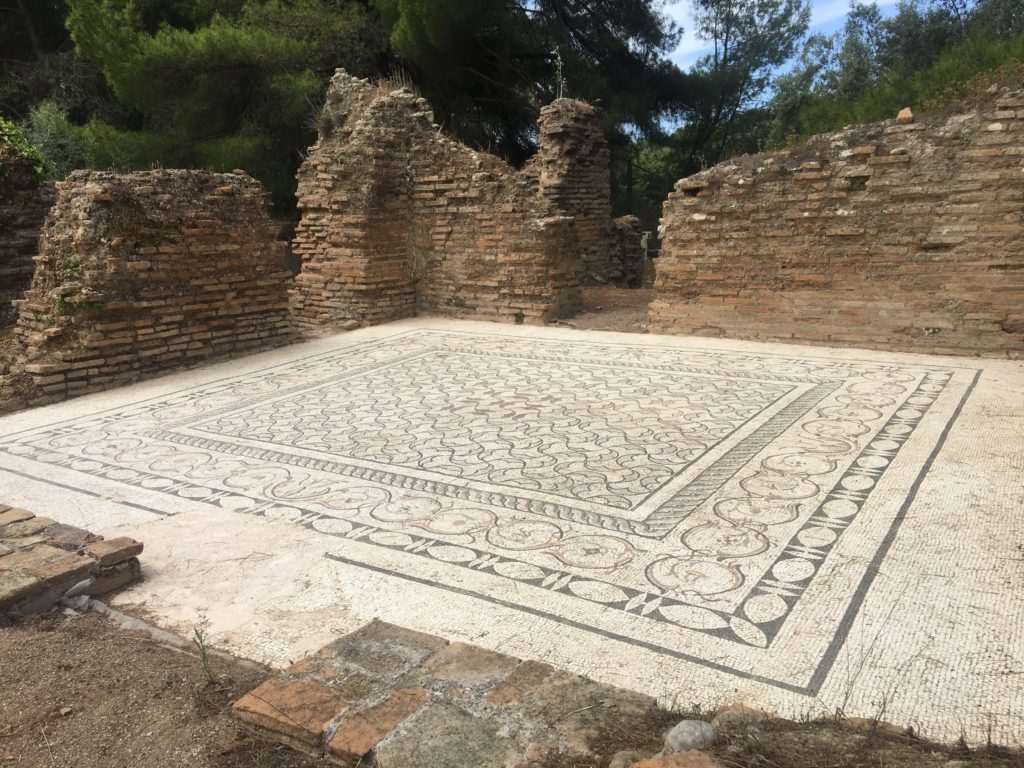
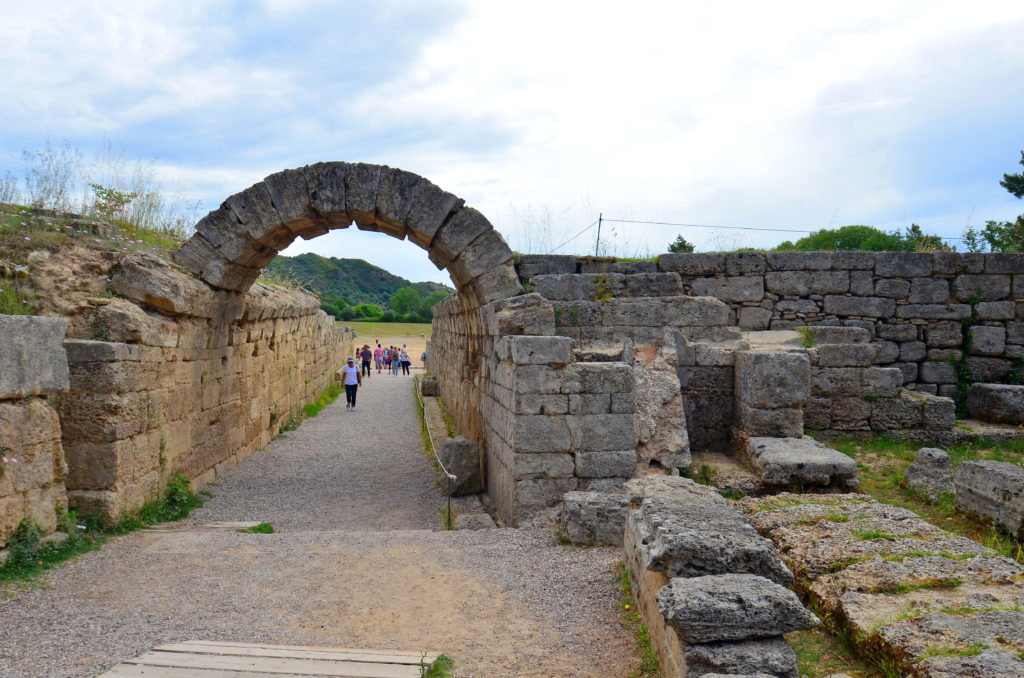
Included in the admission to Ancient Olympia was a museum that housed many of the statues that at one time graced the pediments of the buildings. Researchers were able to piece them together to show how they would have looked.
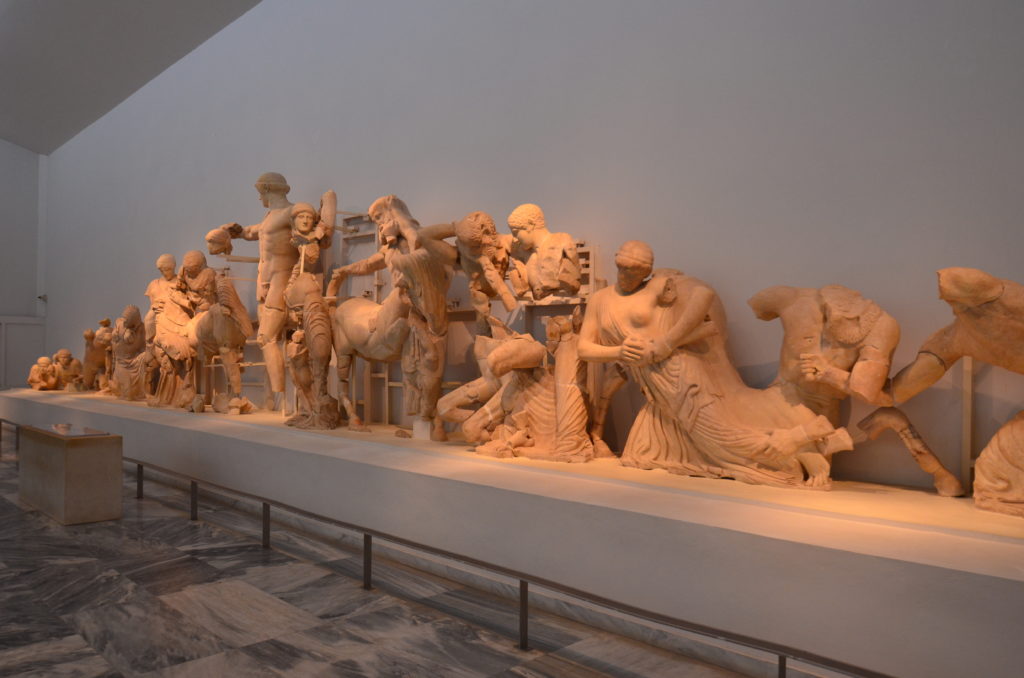
Afterwards, we ate lunch in the modern town of Olympia nearby. We were on a definite time schedule in order for our driver to take us to the Monastary of Panagia Kremasti (now a convent) about 15 kilometers away.
Monastary of Panagia Kremasti
As we ascended up a mountain, we turned into a driveway. Soon after, a white, two-story house appeared. Greenery and flowers draped the blue-trimmed balconies. Our driver instructed us to wait while he spoke to the nuns. He wasn’t sure if we could still get a tour as it was not during their typical visiting hours. Even if we couldn’t tour the convent, I felt seeing this place from the outside was enough of a treat.
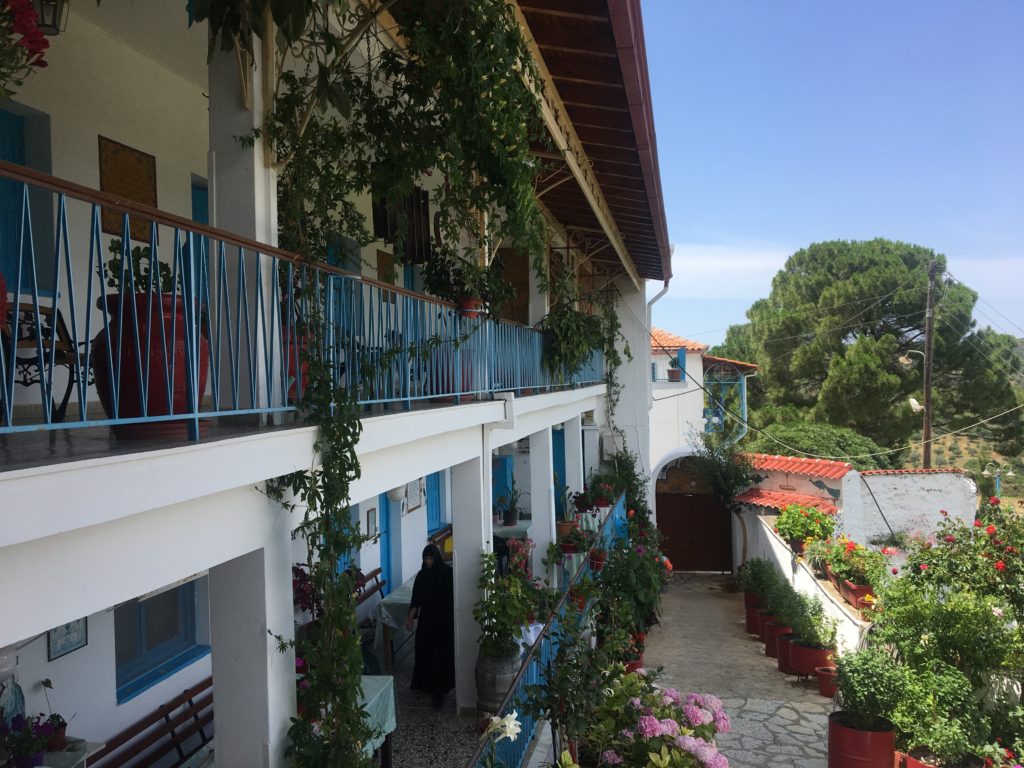
Our driver came back and said we could take a tour. The grounds were incredible with meticulous gardens and views from the mountain. A nun ushered us into a room and spoke to us. Because her accent was so thick, it was hard to understand. The icon of the Virgin Mary which she pointed to, was originally found in a cave. Monks built the monastery into the side of the mountain since the presence of the icon couldn’t be explained in the 1600s. It became a Greek-orthodox convent in the 1930s. The nuns were all very hospitable and gracious – each seeming to have a light in their eyes.
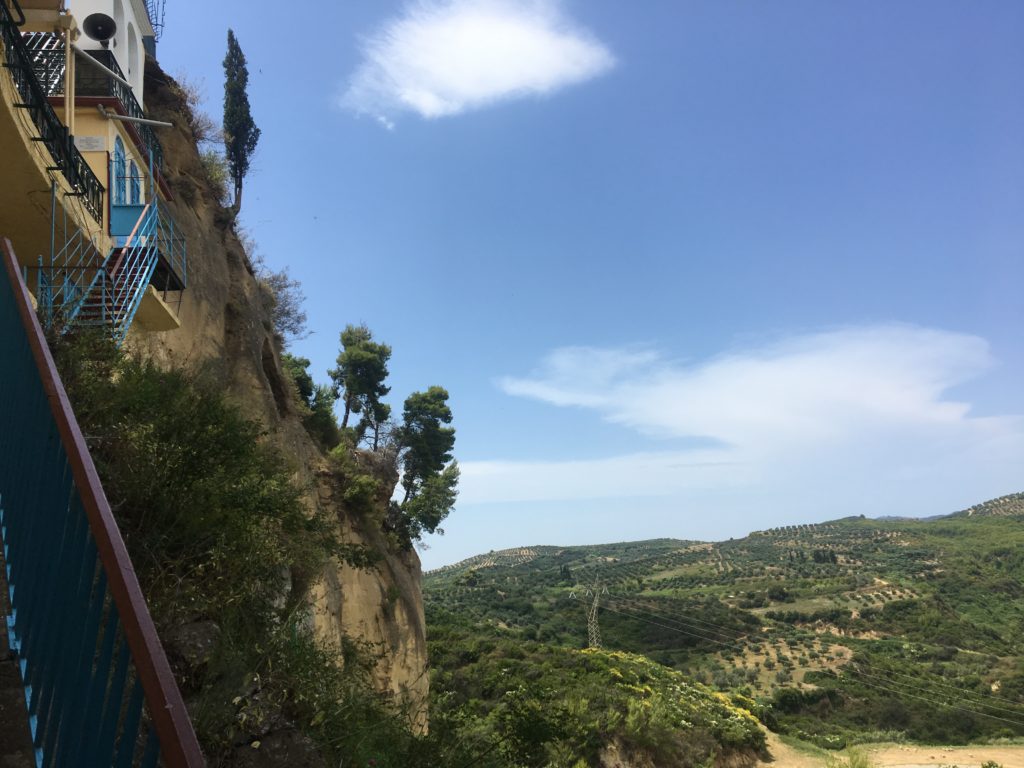
As we climbed the side of the mountain to the chapel at the top, I heard cowbells. One of the nuns explained that they have their own livestock and are completely self-sufficient for food. At the mid-way point, we entered the small cave where the icon had been found.
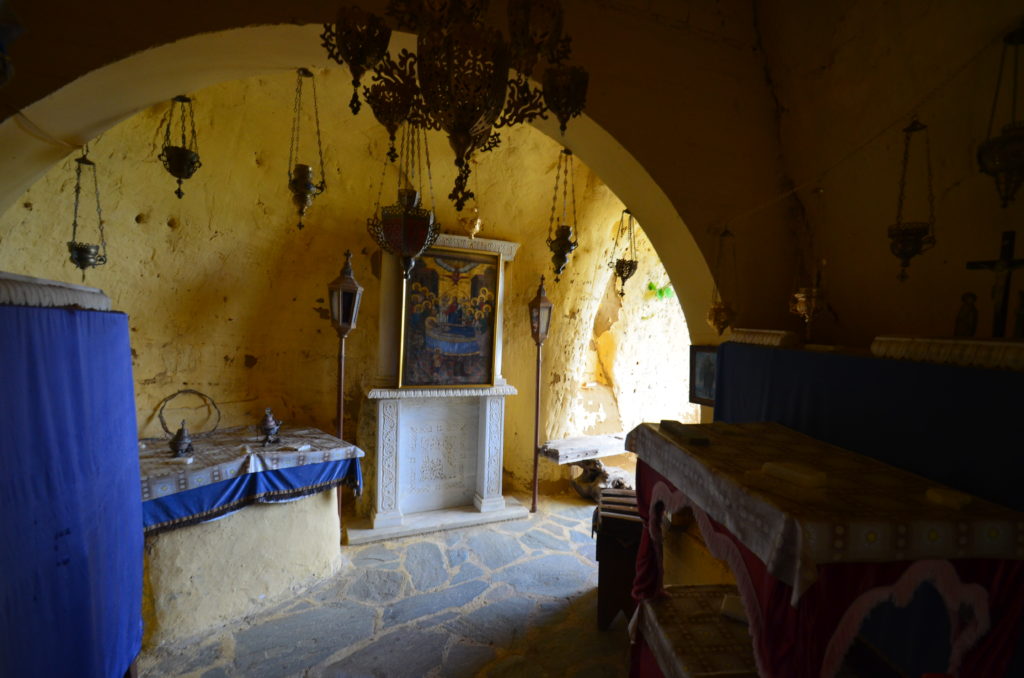
We then proceeded to climb the stairs. Before entering the chapel, the nuns handed my daughters and me drawstring skirts made out of a calico cotton fabric. They instructed us to put these on over our pants and shorts.
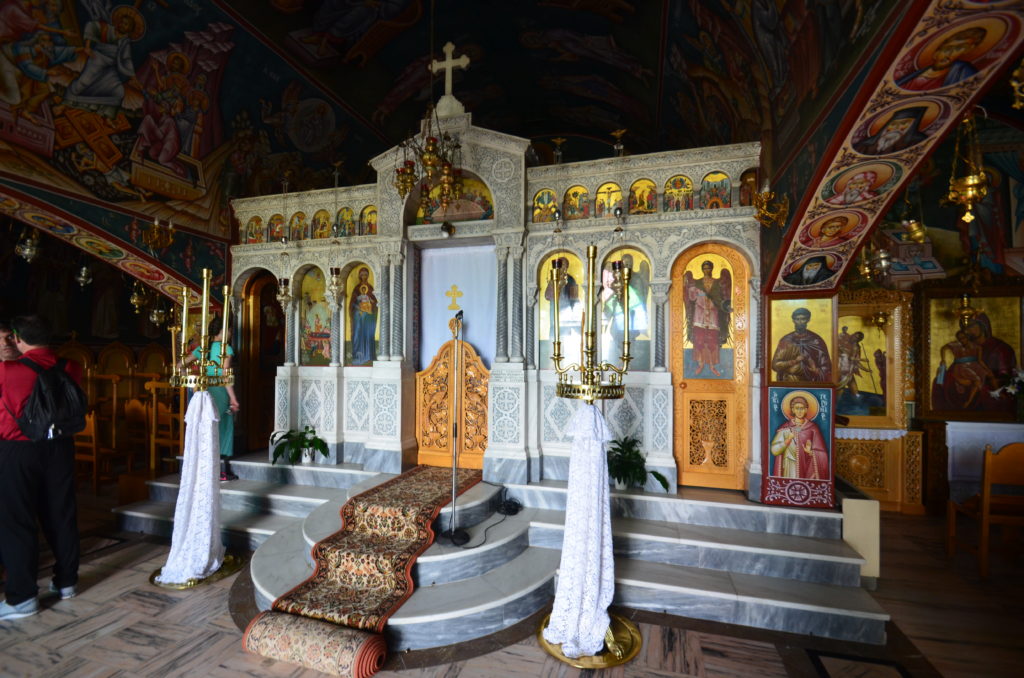
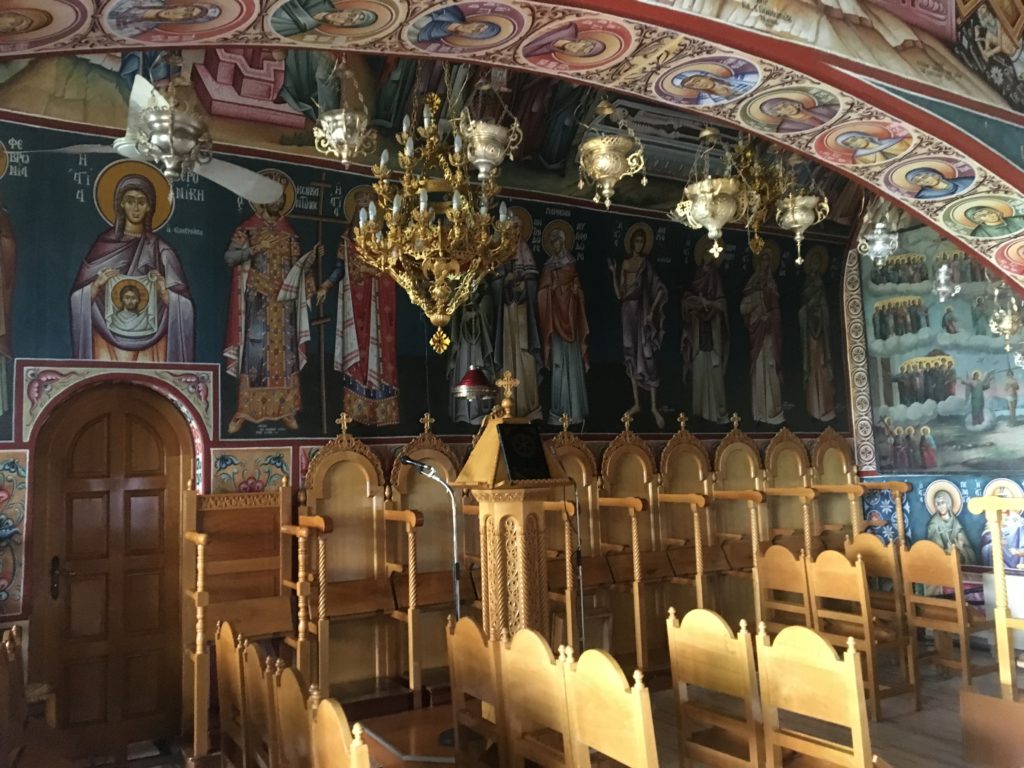
Katakolo
Before we knew it, we had to leave in order to get back to Katakolo in time for our ship’s departure. Back in the port town, we had just enough time to stop at a sidewalk cafe and order coffee, tea and a few desserts before getting back on the ship.
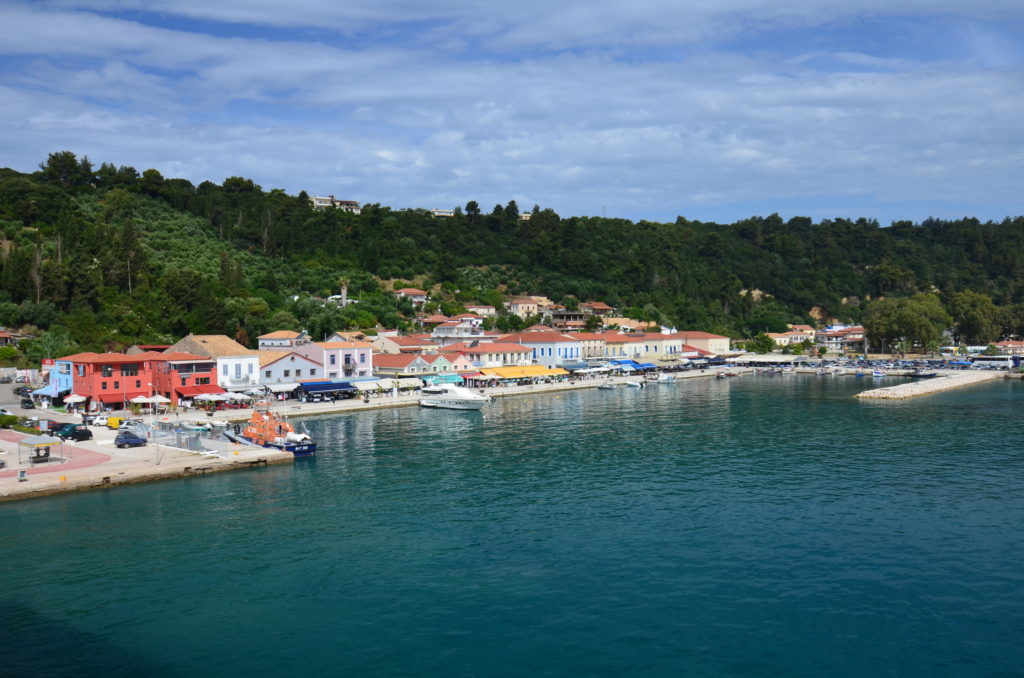
Because Ancient Olympia is on the mainland, many tours originating from Athens offer side trips there. Additionally, buses and train service is also available from Athens. It is definitely a worthwhile visit!
